Myanmar won its independence from British colonial rule in 1948. Sadly its history since then has been massively unhappy. From being the best educated (apart from Japan) country in East Asia, it spiraled down over the ensuing 65 years to being possibly the worst educated as well as one of the poorest. The primary cause of this decline was the world’s longest continuing civil war in which the ethnic Bamar Buddhist majority in the central valley has sought to dominate dozens of non-Buddhist ethnic minorities inhabiting the mountainous borderlands.
A remarkably free and fair election in 2015 was won in a landslide by the National League for Democracy (NLD) led by Daw Aung San Suu Kyi, who had spent most of the previous 25 years under house arrest by the country’s military rulers. Her government took office in April 2016 with control of parliament, but she was barred from the presidency by a provision in the country’s military-drafted constitution of 2008. The president, U Htin Kyaw, is an NLD leader and close associate of Daw Suu. She governs in the newly created position of state counsellor and as the foreign minister.
The top priority of Daw Suu’s government is bringing peace to the country, but, as its first anniversary approaches, the prospect for peace with the ethnic minorities is discouraging. Moreover, a new conflict has dominated the news from Myanmar in recent months: the plight of the Muslim Rohingya community.
Conflict with the Rohingya community
The post-independence governance of Myanmar was so bad (led by heavy-handed military rulers from 1962 to 2011) that no credible census had been carried out, fueling rumors that exacerbated inter-ethnic conflict. The United Nations-supported census in 2014 produced a reliable total population figure of 51.4 million. The Bamar ethnic majority was reported to be 68 percent of the total, while the largest (Shan) of the many minorities accounted for 9 percent. By religion, 88 percent of the population was Buddhist, 6 percent Christian, and 4 percent Muslim. These ethnicity and religion figures are less reliable, however. For example, many families have mixed ethnicity but the census takers had to record them as one of the 135 official ethnicities.
The Rohingya situation involves relatively few people but may be the most difficult ethnic conflict to resolve.
The Rohingya situation involves relatively few people but may be the most difficult ethnic conflict to resolve. Muslim communities scattered across the country have existed for centuries, generally living peacefully among their Buddhist neighbors. The Rohingya are the largest of these communities, an estimated 1.3 million out of the 2.5 million Muslim total, and are confined to a small part of the country—on the Indian Ocean (Arakan) coast bordering Bangladesh.
One part of the Rohingya problem is that they reside in Rakhine State, one of Myanmar’s 14 main administrative areas. The largest ethnic group in Rakhine State, the Rakhine Buddhists, deeply resent the country’s Bamar majority for suppressing them. This sentiment fuels their dislike of the Rohingya who are seen as crowding them out.
Another part of the problem is conflicting narratives about the origins of the Rohingya people. It is clear that during British rule from the 1870s to 1948 Muslims immigrated to Myanmar from colonial India, which included current day Bangladesh. Not so clear is how many “Bengali” Muslims from Bangladesh settled in Rakhine State after Burma’s independence. Against all evidence, the Rohingya have been portrayed as an existential threat to the Rakhine Buddhists by outbreeding them with the aim of creating the country’s only Muslim-majority state. An especially vicious outbreak of anti-Rohingya violence occurred in 2012, swelling the numbers in dismal refugee camps to 130,000 or more.
Then in October 2016, three units of the Myanmar border guard force were attacked and nine officers were killed. The attacks are believed to have been carried out by Muslim insurgents based in Bangladesh. In response, the Myanmar military mounted a counterinsurgency operation that displaced another 90,000 mostly Rohingya residents and that, according to a recent U.N. report, involved a range of serious atrocities.
Peace with the ethnic minorities
Anti-Muslim attacks have occurred in other parts of Myanmar in recent years, abetted by an extreme nationalist-Buddhist movement that has grown as government repression of dissent began easing after 2010. It is hard for Americans to imagine the depth of anti-Muslim sentiment among the Buddhist population of Myanmar. Daw Suu has been sharply criticized for failing to speak out forcefully against the mistreatment of the Rohingya, but she would lose her ability to govern the country were she to do so and jeopardize the chance of achieving peace with the other ethnic minorities.
The government led by retired General Thein Sein (2011-2016) also made peace a top priority. It initiated negotiations on a National Ceasefire Agreement as the first step toward creating a federal structure tolerable to the ethnic minorities. Before handing over power, however, the Thein Sein government was only able to persuade about half of the ethnic armed groups to sign the ceasefire. While Daw Suu’s government invested new energy and hope in the peace process, sadly hope has been slipping in recent months.
A resource driven civil war
The borderlands of Myanmar are rich in mineral and forest resources: jade, copper, gold, tin, teak, rubber, etc. After independence, the military saved the country from being taken over by communists or from breaking up into smaller ethnic nations, with the ultimate aim of assimilating all ethnic minorities and faiths into the Bamar Buddhist majority. It maintained its control of the heartland by extracting natural resources, including natural gas from offshore fields that it began exporting to Thailand around 2000 and to China around 2014. The ethnic minorities have been able to smuggle enough resources to neighboring China, Thailand, and India to obtain the weapons required to defend their territories against the government’s army. Finding a formula for sharing the country’s resource wealth between the Bamar majority and the ethnic minorities could turn out to be the hardest part of making peace.
Despite tragedy, hope remains for democracy
Earlier this year, U Ko Ni, a prominent Muslim personality and a legal advisor to Daw Suu, was shot and killed at the Yangon airport. It is speculated that U Ko Ni was targeted because he was working on amendments to the 2008 constitution that would have limited the military’s political power, not because he was Muslim.U Ko Ni’s assassination has been widely reported in the international press, heightening concerns about Myanmar’s transition to democratic rule and about Daw Suu’s leadership.
One crucial policy issue today is whether the peace process set in motion by Daw Suu will get the job done or needs to be revised or replaced.
While it is a serious setback for the country, it is unlikely to have a bearing on the country’s existential challenge of achieving peace. The next benchmark will be the second session of the “21st Century Panglong” peace conference in the first week of May. While the first session, last August, was simply a platform for stakeholders to express their concerns and goals, the May session will seek consensus on specific principles or actions. But because the peace process will likely extend over five or more years, the May outcome will be largely symbolic rather than a major step forward.
One crucial policy issue today is whether the peace process set in motion by Daw Suu will get the job done or needs to be revised or replaced. Another weighty issue is what the foreign diplomatic and aid community should do to support the peace process. My personal view, based on more than a dozen visits to the country since 2010 and constant research, is that foreigners may be doing more harm than good. Myanmar’s government since 2011 has been overwhelmed by foreigners who know too little about the country’s history and culture. The path to better governance might be shorter if Daw Suu and her ministers were given more space to study the options and learn from their mistakes without so much Monday morning quarterbacking by well-meaning but ignorant visitors.
The Brookings Institution is committed to quality, independence, and impact.
We are supported by a diverse array of funders. In line with our values and policies, each Brookings publication represents the sole views of its author(s).
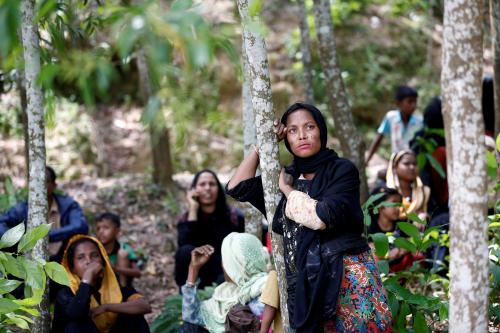
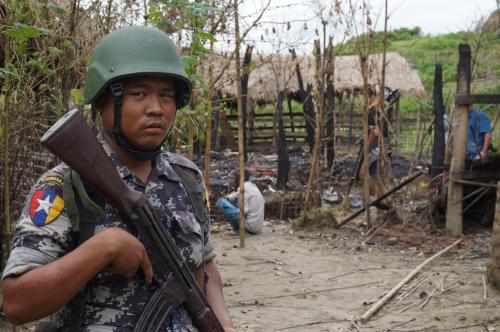
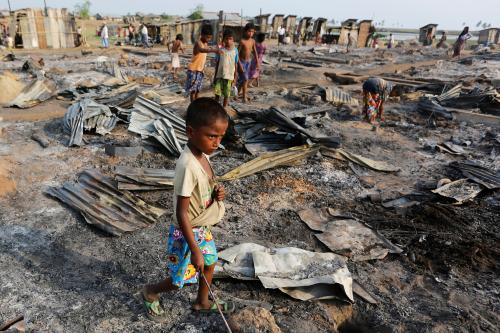




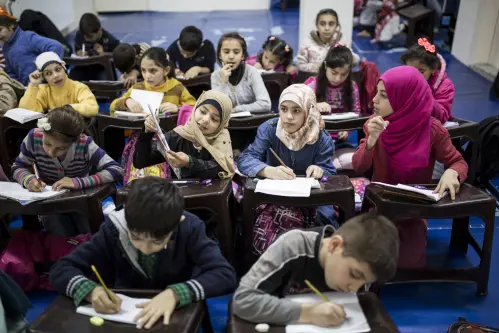

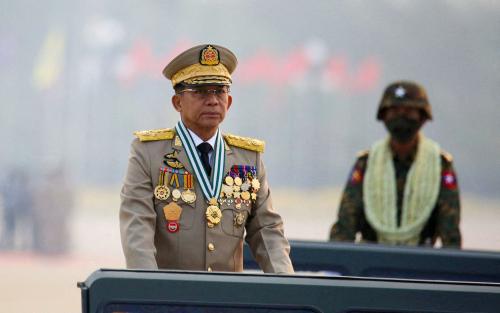
Commentary
Peace in Myanmar depends on settling centuries-old ethnic conflicts
March 20, 2017